Abstract
OBJECTIVE: Although lowering incidence rates of human immunodeficiency virus (HIV) transmission is the primary goal of needle exchange programs (NEPs), other desirable outcomes are possible. Referring exchange participants to more comprehensive drug abuse treatment programs has the potential to reduce or eliminate the use of drugs. This possibility was evaluated by comparing the treatment responses of new admissions with an outpatient opioid agonist treatment program in Baltimore, Maryland. METHODS: New admissions (1994 - 1997) to an opioid agonist treatment program were first grouped by referral source (needle exchange, n = 82 vs. standard referrals, n = 243) and then compared on admission demographic and clinical variables and response to treatment during the first three months. Outcome measures included retention rates, self-reported drug use and injecting frequencies, self-reported illegal activities for profit, and results from weekly urinalysis testing for opioids and cocaine. RESULTS: Patients from the NEP were significantly older and more likely to be male, African American, and unemployed than standard referral patients. Needle exchange patients also had a greater baseline severity of drug use than patients in the standard referral group. Despite these baseline differences, both groups achieved comparably good short-term treatment outcomes (including reduced drug use and criminal activity for profit); treatment retention was also good, although slightly better in the standard referral group (88% vs. 76%). CONCLUSION: These data demonstrate the feasibility and merits of creating strong linkages between NEPs and more comprehensive drug abuse treatment clinics.
Full text
PDF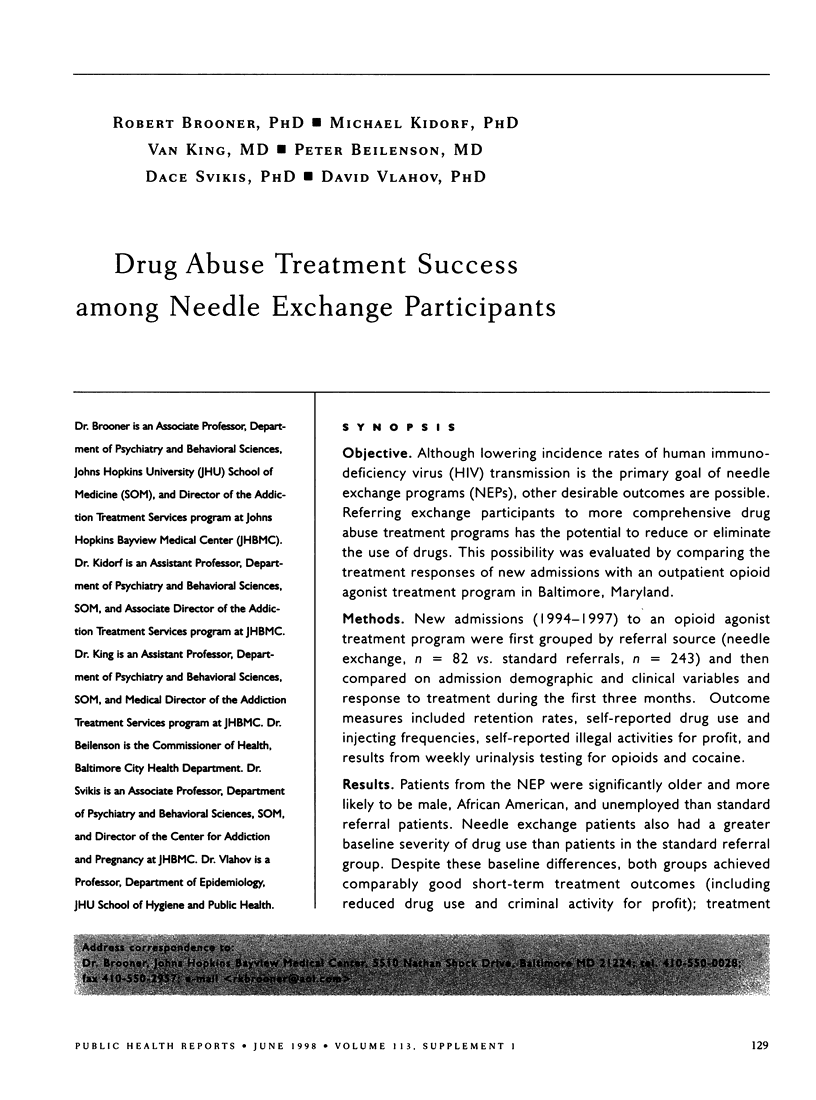
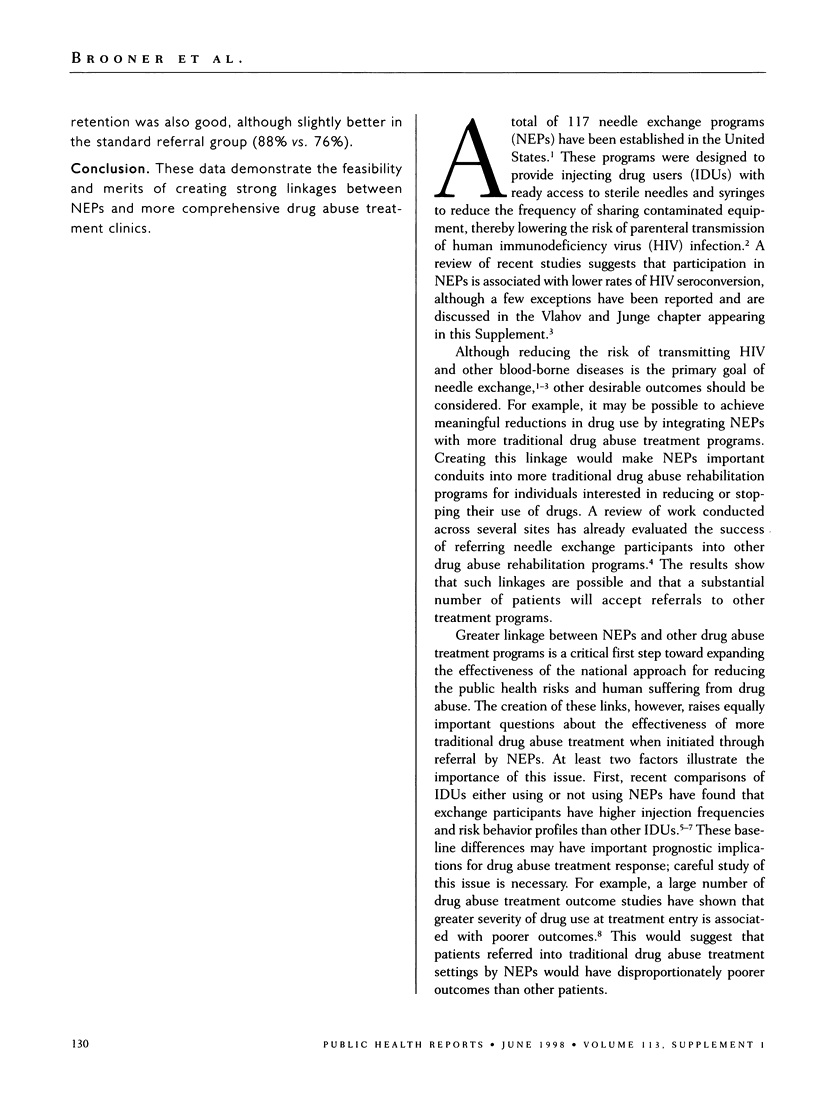
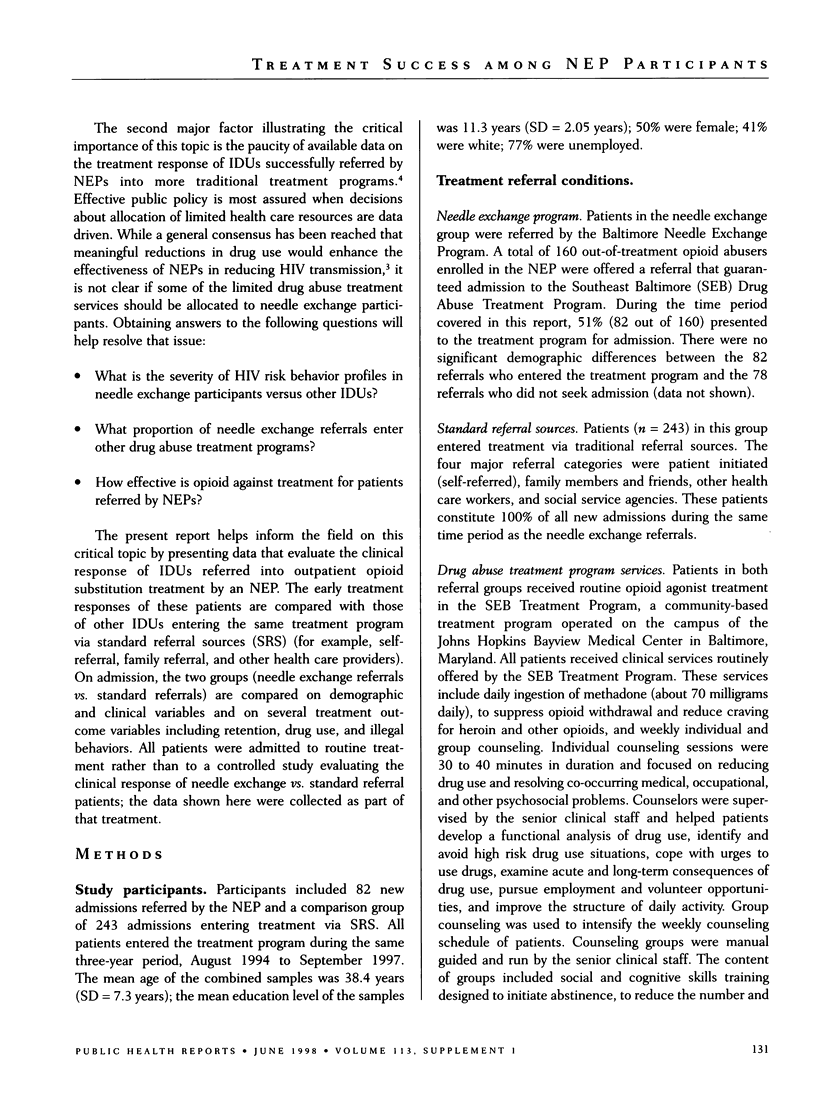
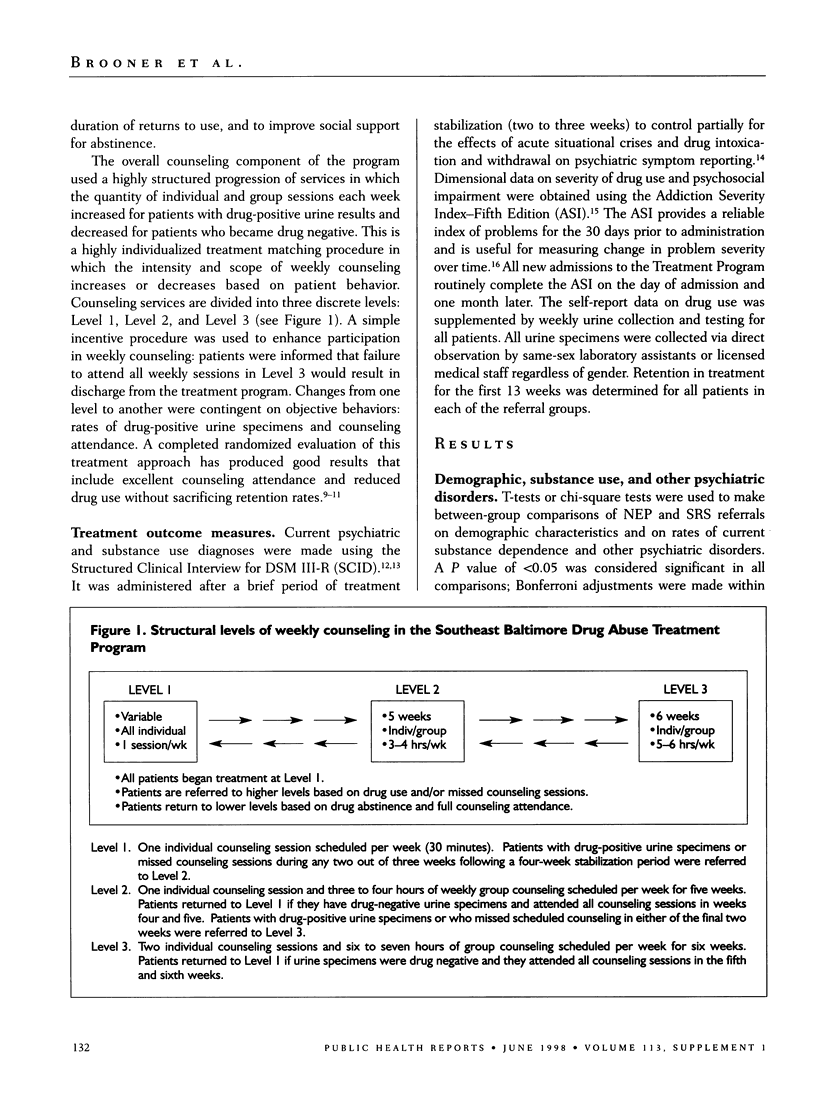
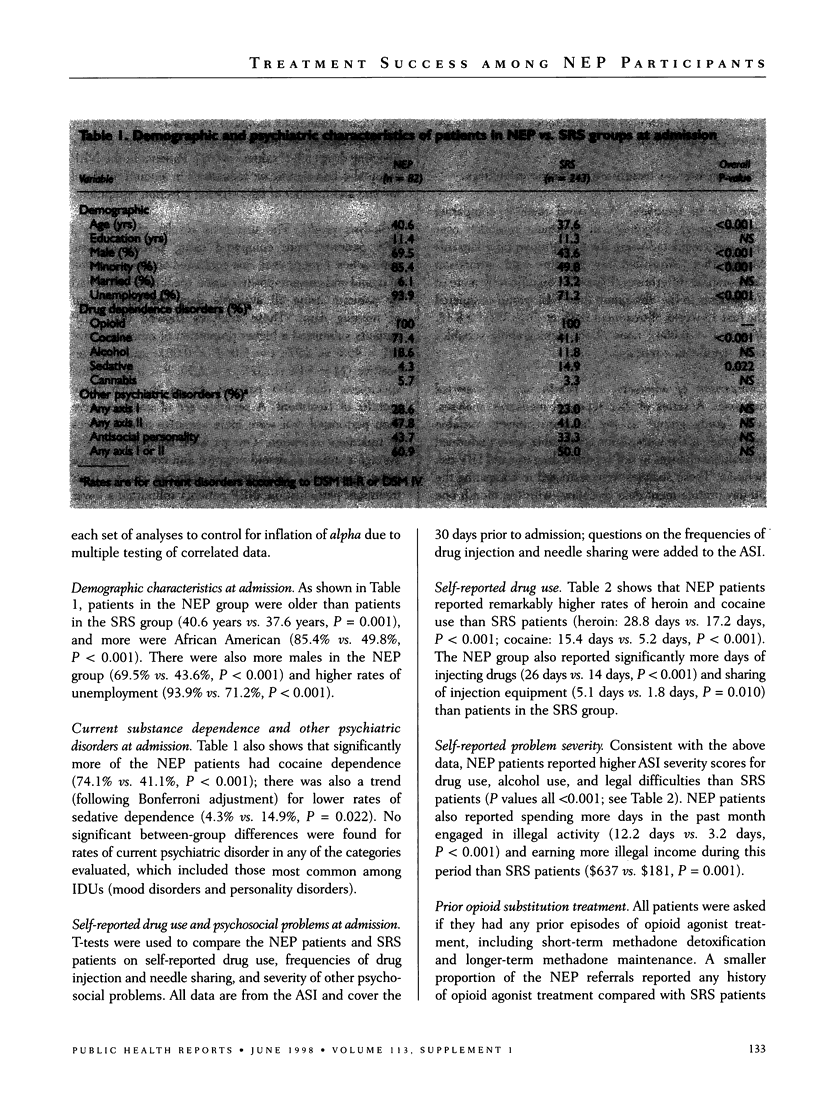
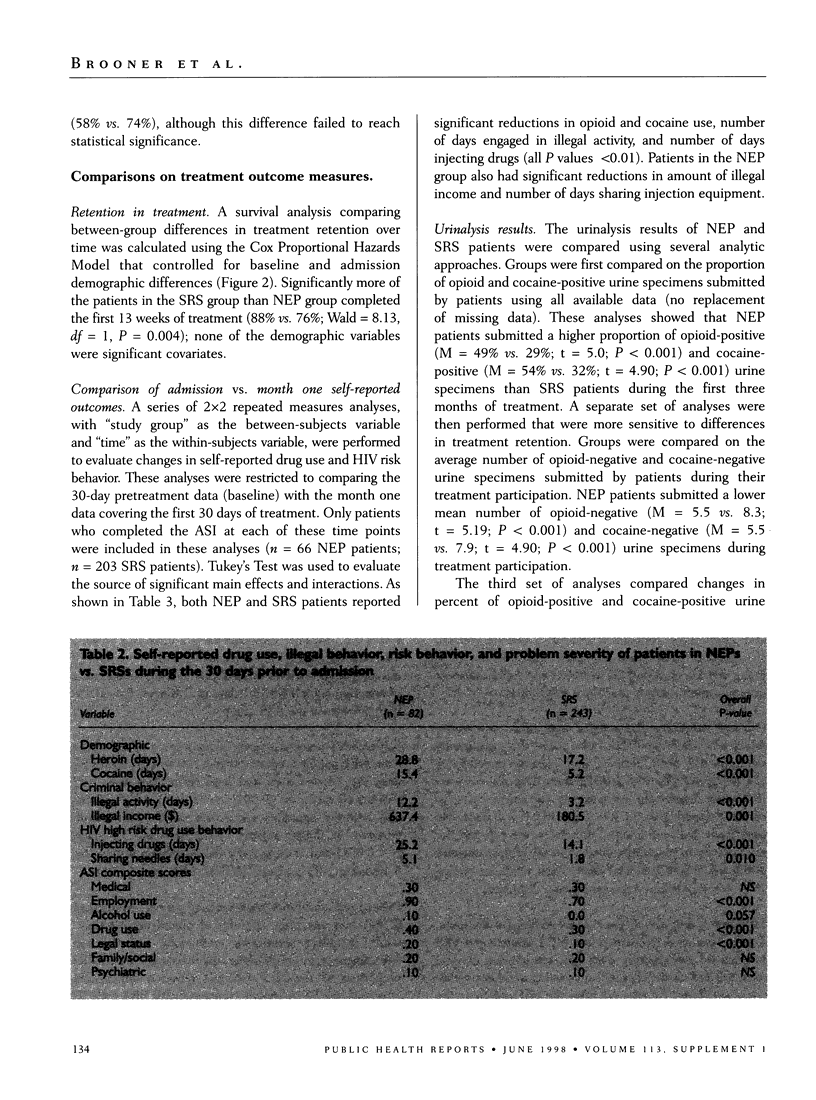
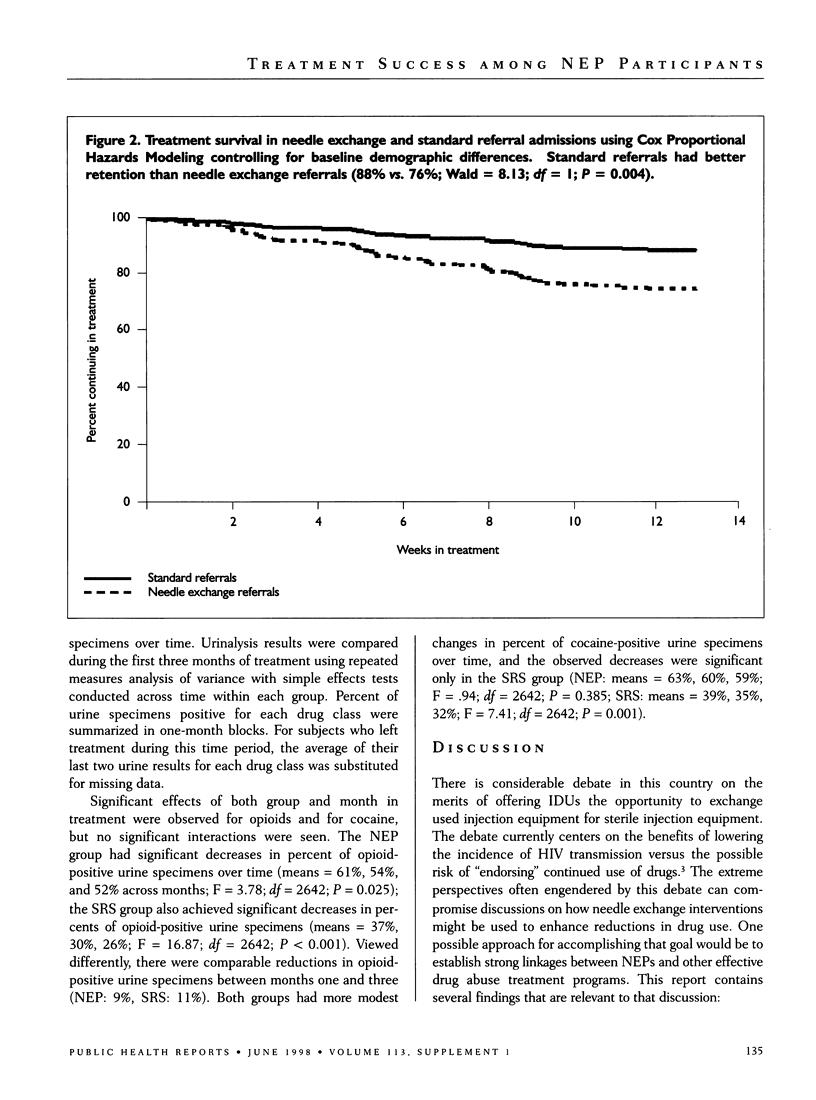
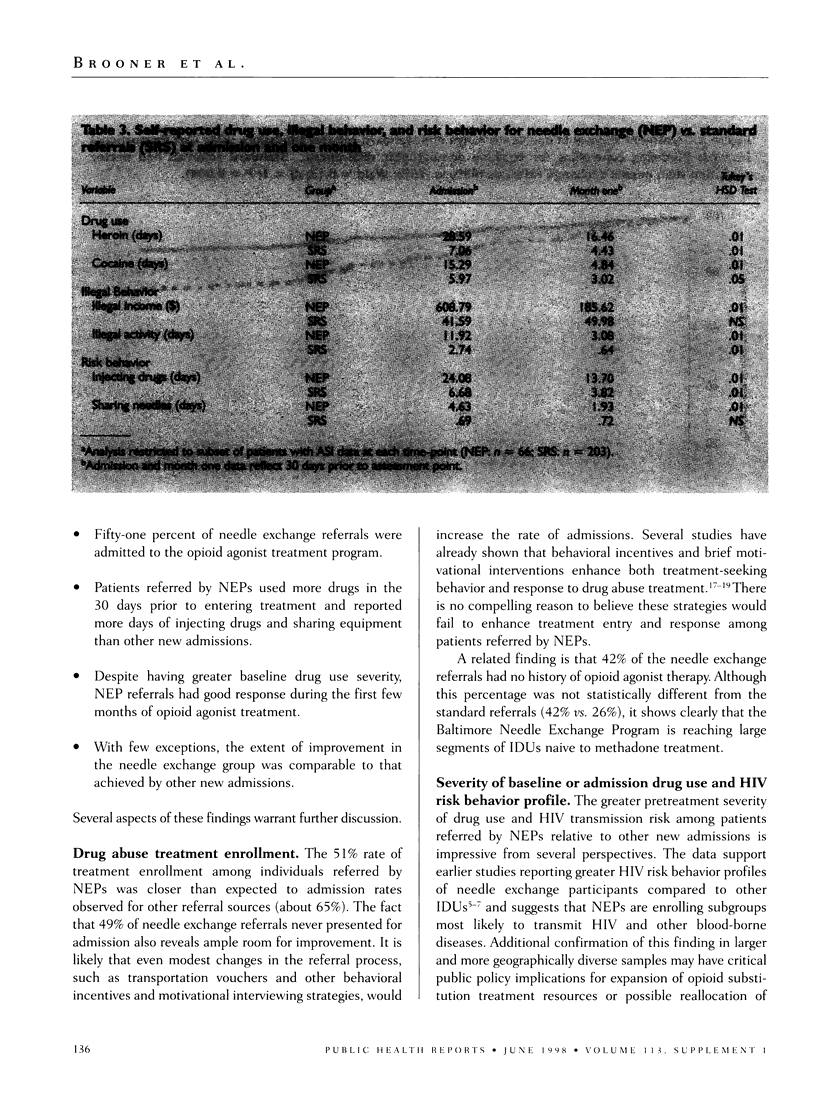
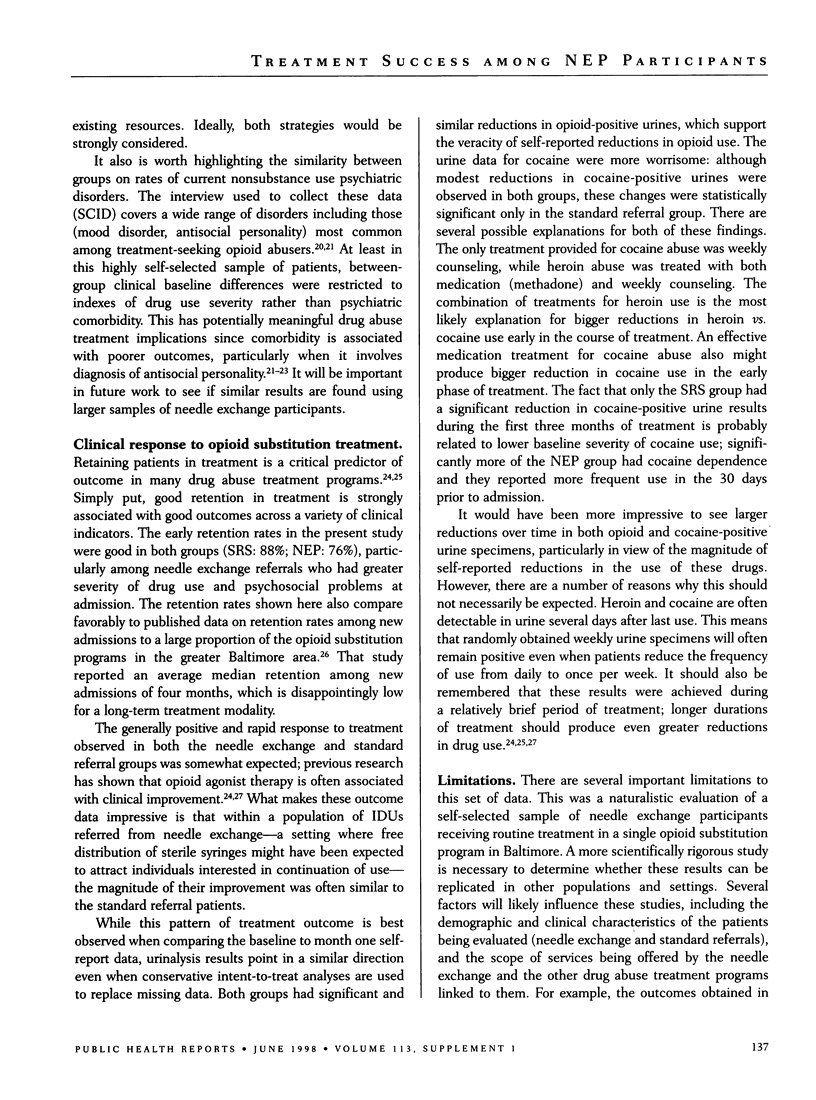
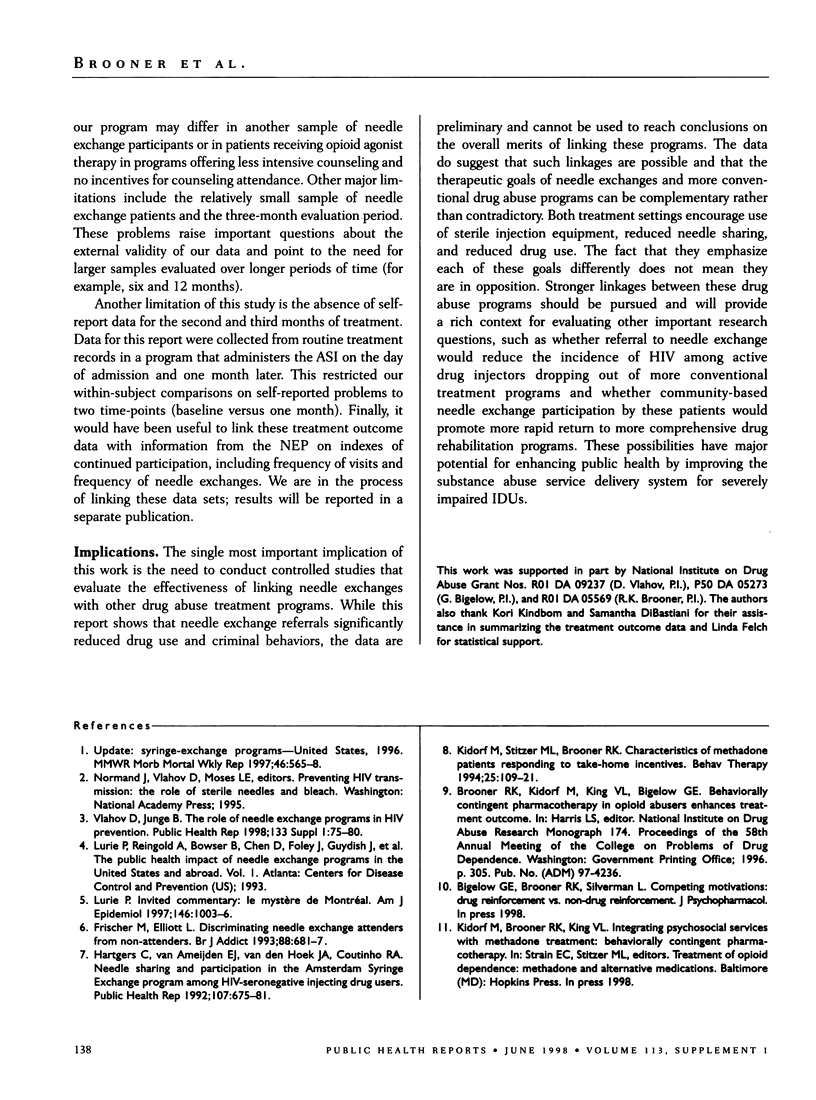
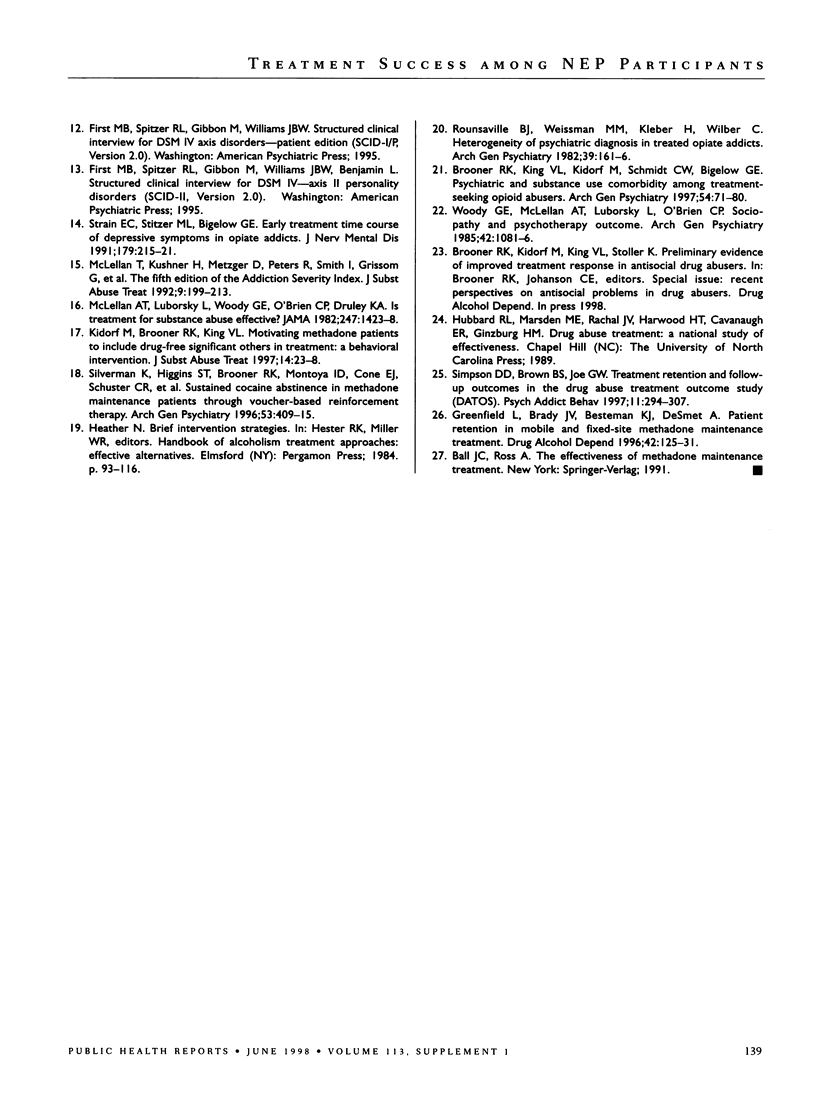
Selected References
These references are in PubMed. This may not be the complete list of references from this article.
- Brooner R. K., King V. L., Kidorf M., Schmidt C. W., Jr, Bigelow G. E. Psychiatric and substance use comorbidity among treatment-seeking opioid abusers. Arch Gen Psychiatry. 1997 Jan;54(1):71–80. doi: 10.1001/archpsyc.1997.01830130077015. [DOI] [PubMed] [Google Scholar]
- Frischer M., Elliott L. Discriminating needle exchange attenders from non-attenders. Addiction. 1993 May;88(5):681–687. doi: 10.1111/j.1360-0443.1993.tb02081.x. [DOI] [PubMed] [Google Scholar]
- Greenfield L., Brady J. V., Besteman K. J., De Smet A. Patient retention in mobile and fixed-site methadone maintenance treatment. Drug Alcohol Depend. 1996 Oct;42(2):125–131. doi: 10.1016/0376-8716(96)01273-2. [DOI] [PubMed] [Google Scholar]
- Hartgers C., van Ameijden E. J., van den Hoek J. A., Coutinho R. A. Needle sharing and participation in the Amsterdam Syringe Exchange program among HIV-seronegative injecting drug users. Public Health Rep. 1992 Nov-Dec;107(6):675–681. [PMC free article] [PubMed] [Google Scholar]
- Kidorf M., Brooner R. K., King V. L. Motivating methadone patients to include drug-free significant others in treatment: a behavioral intervention. J Subst Abuse Treat. 1997 Jan-Feb;14(1):23–28. doi: 10.1016/s0740-5472(96)00121-3. [DOI] [PubMed] [Google Scholar]
- Lurie P. Invited commentary: le mystère de Montréal. Am J Epidemiol. 1997 Dec 15;146(12):1003–1010. doi: 10.1093/oxfordjournals.aje.a009227. [DOI] [PubMed] [Google Scholar]
- McLellan A. T., Kushner H., Metzger D., Peters R., Smith I., Grissom G., Pettinati H., Argeriou M. The Fifth Edition of the Addiction Severity Index. J Subst Abuse Treat. 1992;9(3):199–213. doi: 10.1016/0740-5472(92)90062-s. [DOI] [PubMed] [Google Scholar]
- McLellan A. T., Luborsky L., O'Brien C. P., Woody G. E., Druley K. A. Is treatment for substance abuse effective? JAMA. 1982 Mar 12;247(10):1423–1428. [PubMed] [Google Scholar]
- Rounsaville B. J., Weissman M. M., Kleber H., Wilber C. Heterogeneity of psychiatric diagnosis in treated opiate addicts. Arch Gen Psychiatry. 1982 Feb;39(2):161–168. doi: 10.1001/archpsyc.1982.04290020027006. [DOI] [PubMed] [Google Scholar]
- Silverman K., Higgins S. T., Brooner R. K., Montoya I. D., Cone E. J., Schuster C. R., Preston K. L. Sustained cocaine abstinence in methadone maintenance patients through voucher-based reinforcement therapy. Arch Gen Psychiatry. 1996 May;53(5):409–415. doi: 10.1001/archpsyc.1996.01830050045007. [DOI] [PubMed] [Google Scholar]
- Vlahov D., Junge B. The role of needle exchange programs in HIV prevention. Public Health Rep. 1998 Jun;113 (Suppl 1):75–80. [PMC free article] [PubMed] [Google Scholar]
- Woody G. E., McLellan A. T., Luborsky L., O'Brien C. P. Sociopathy and psychotherapy outcome. Arch Gen Psychiatry. 1985 Nov;42(11):1081–1086. doi: 10.1001/archpsyc.1985.01790340059009. [DOI] [PubMed] [Google Scholar]


